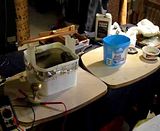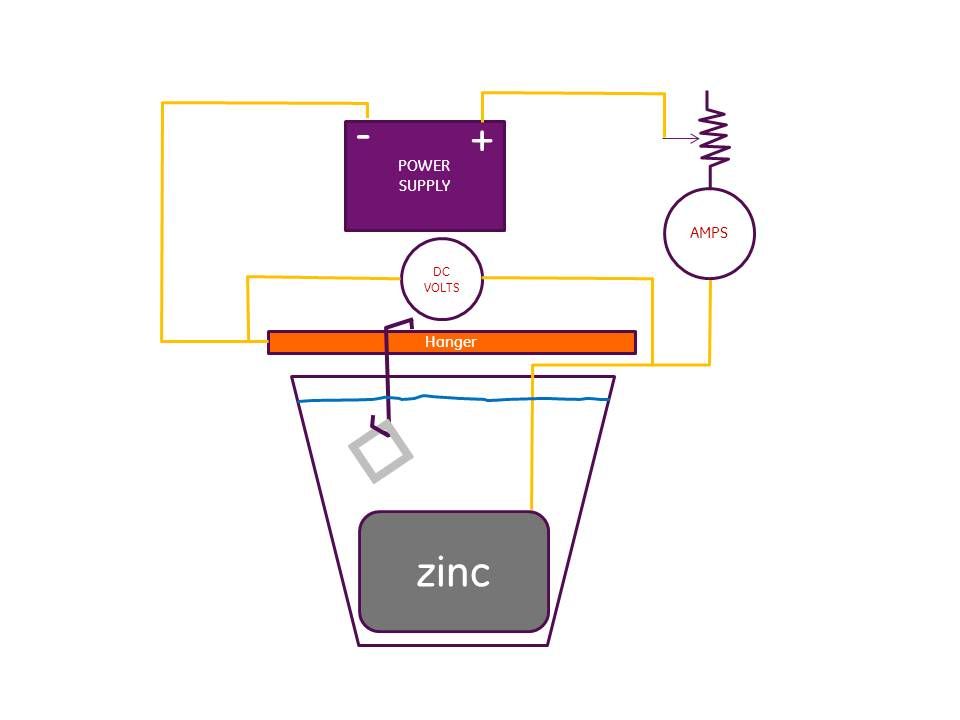-
pc50fixer
- honda305.com Member
- Posts: 8
- Joined: Sat Feb 18, 2012 10:57 am
- Location: East Coast of Canada
Post
by pc50fixer » Fri Mar 16, 2012 1:03 pm
Having some issues in my initial test run and want to check in with those who have been through it for their input and help. Have a quick look at this short video....click below

One edit to the video regarding my rheostat. Its a 500 ohm and 50 watt...not 500 watt.
2 possible reasons off the top of my head for what I'd consider grey, dull plating and low voltage that the rheostat won't seem to adjust sufficiently. My zinc plates are thick used pieces off the boat. The thicker the zinc chunk the more electrical "juice" they either absorb or the more difficult it is to move the current through them. I may ditch them and get the thinner roofing strips.
What do you think?
-
Snakeoil
- honda305.com Member
- Posts: 1150
- Joined: Wed Aug 04, 2010 6:45 pm
- Location: Upstate NY
Post
by Snakeoil » Fri Mar 16, 2012 2:54 pm
You have your rheostat hooked up wrong. You need to be connected to either the right or left leg and the center tap. You are on the right and left leg.
Dark gray plating is too much voltage. Your zinc size has nothing to do with it.
I cannot speak to what you can expect with 4 amps of current. Thats about 10 times more than you need.
I guess I should make a diagram and post it here. I'll try to do that.
regards,
Rob
-
conbs
- honda305.com Member
- Posts: 989
- Joined: Mon Mar 16, 2009 3:29 pm
- Location: SW Idaho
Post
by conbs » Fri Mar 16, 2012 3:53 pm
Try to get 1.5 to 3 volts. Use your rheostat to adjust amps to get 1/10 amp per square inch of item being plated. Let everyone know how it works.
-
Snakeoil
- honda305.com Member
- Posts: 1150
- Joined: Wed Aug 04, 2010 6:45 pm
- Location: Upstate NY
Post
by Snakeoil » Fri Mar 16, 2012 4:09 pm
Here is how my system is set up.

Only thing missing is the bubbles.
regards,
Rob
-
pc50fixer
- honda305.com Member
- Posts: 8
- Joined: Sat Feb 18, 2012 10:57 am
- Location: East Coast of Canada
Post
by pc50fixer » Fri Mar 16, 2012 5:18 pm
I ditched the charger and tried using another little wall charger (from an old GPS unit). Its a 5 volt and 1 amp. I hooked up the rheostat correctly as Rob suggested and tried it again. This time it seemed to stay at 5 volts. Whenever I adjusted the rheostat it seemed to act very irratic and I couldn't get it to stay consistent. Bouncing back and forth between 5 and 0 and a few points in between.
-
Snakeoil
- honda305.com Member
- Posts: 1150
- Joined: Wed Aug 04, 2010 6:45 pm
- Location: Upstate NY
Post
by Snakeoil » Sat Mar 17, 2012 7:54 pm
One of the things about this process is the plating bath is sticky and leaves deposits all over anything it touches, including where you make your connections and where you hang your hangers. I usually clean up all the connection points with one of my brass brushes before I begin. The hanger wire on my set up is usually candy coated after it has say subsequent to emptying my pail after a plating run. That coating does not conduct and actualy is a pretty good insulator.
Once everything is clean, check your "made in China by prisoners" rheostat. Connect your DMM to just the rheostat and measure the ohms as you adjust the wiper. You should see a pretty smooth increase or decrease in resistance as you move the wiper from full to zero resistance. If not, clean up the wire with an eraser or your brass brush. Clean the wiper if you can. You can put some acetone or similar on a rag and lift the wiper and give it a cleaning like a shoe shine. Re-try with your DMM and see if you get smooth changes in resistance now.
Are you sure your DMM can measure up to 1 amp? Many cannot. Do you have the leads plugge into the correct sockets for amps on your DMM? Often you need to change the red lead to a different socket for measuring amps.
Are you on the correct scale for volts? When you say 1 to 5 I assume you mean volts. You need to specify or we won't know what you are talking about. If you are on the wrong scale, the meter may only read gross changes in voltage.
Go on the web and search plating. There are several sites that talk about doing this for teachers to demo the process in the classroom. It walks you thru the basics and will give you an understanding of what you are doing. Troubleshooting electrical problems from a distance are always a bit of a challenge because the person describing the problem could provide incorrect or misleading info. If you know how the system should work and why it works, then you can usually figure out why it does not work.
Hope this helps.
regards,
Rob
-
brewsky
- honda305.com Member
- Posts: 1816
- Joined: Wed Jul 23, 2008 5:21 am
- Location: Princeton, WV
Post
by brewsky » Sat Apr 14, 2012 6:02 pm
Finally got around to trying this out myself......low budget setup below:
1/2 lb white sugar
1/2 lb epsom salt
2 qts white vinegar
2 C batteries (in series)
1 slug of zinc anode from local hardware store ($14.00 OUCH!..only local source I could find)
Got around 300 milliamps depending on how close the anode was to the target.
Lotsa bubbles!
-
Attachments
-

-

-

-

66 dream, 78 cb750k, 02fz1, 09 wing





